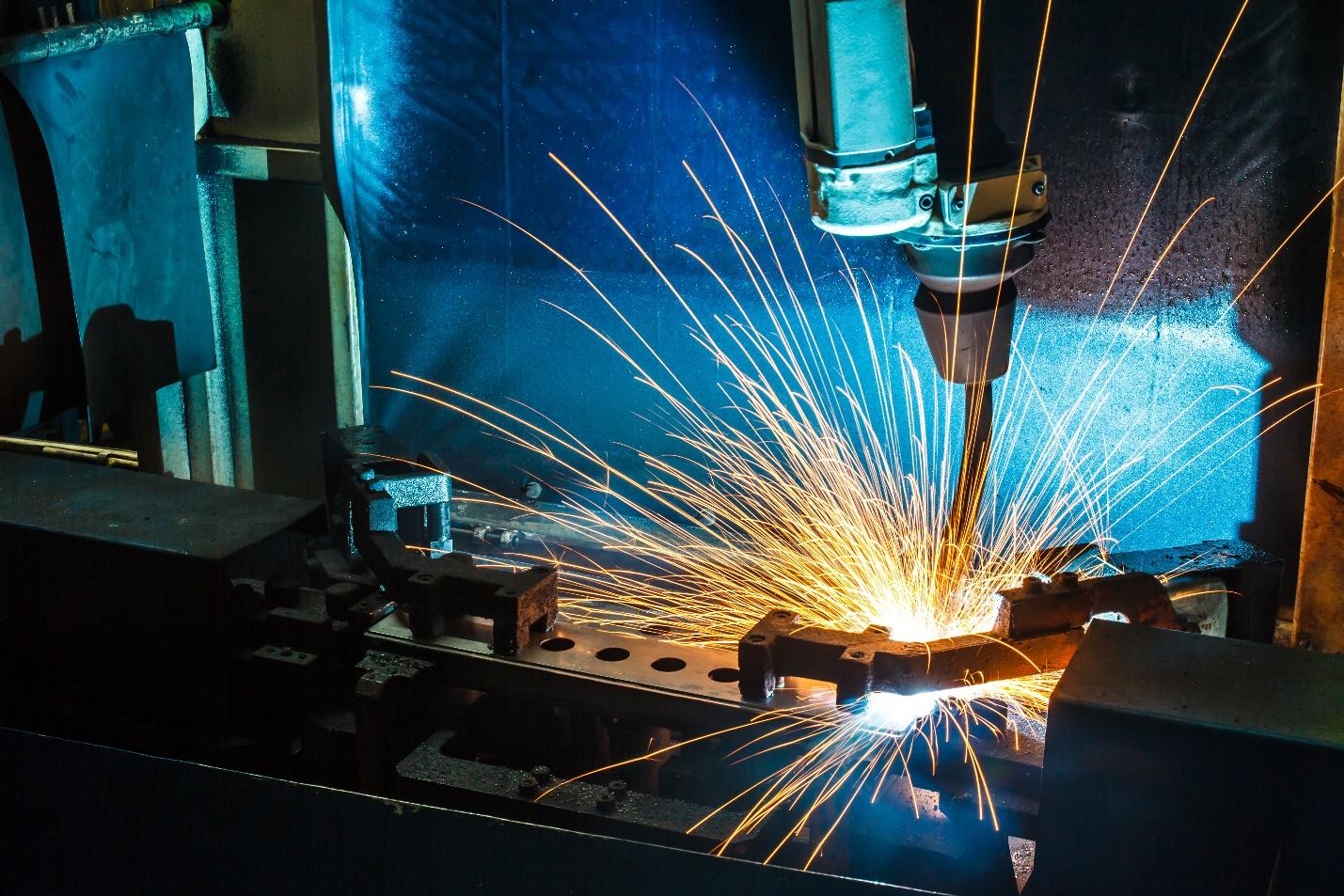
The economic benefits of recycling scrap metal may not always be visible, but when you look below the surface, the scrap metal recycling industry has its impact on the economy.
Last month, major retailer Walmart announced that it was making a firm commitment to carrying out a new vision: a stronger commitment to recycling used materials.
Their pledge also included the expansion of its use of renewable energy sources by installing solar panels at many of their locations and ultimately supplying its global operations with 50 percent renewable energy by 2025.
For this large retailer, it’s a recognition that today, recycling is big business, one that’s making a huge impact on a global scale. It was also a recognition by a leading employer that recycling helps make a significant contribution to the U.S. economy, and to our environment.
The environmental benefits of recycling are well known. Take scrap metal as an example. Keeping scrap metals out of our landfills is cleaner and healthier for our environment since they contain toxic materials like mercury and lead that can contaminate the soil and water. And we know that recycling scrap metal allows it to be used to make new products.
But what’s less known is how important this industry is to our overall economy. The U.S. recycles roughly 130 million tons of material per year. That’s helped to generate $117 billion annually in economic activity and has created more than 500,000 jobs, according to the Institute of Scrap Recycling Industries.
That truly is “Big Business.”
How Does the Scrap Metal Industry Contribute to Our Economy?

The economic benefits of recycling scrap metal are noticeable. Today, scrap is a multi-billion-dollar industry and a huge contributor to the recycling industry worldwide, and it remains near the top of the economic supply chain.
Even as the economy has gone through high and low periods over the past decade, scrap recycling has proven to be a very resilient industry, and one that’s helped to drive our economy. And that’s been particularly true as the global economy has gotten stronger in recent years. This economic boom has resulted in major public and private investment in new commercial construction, new infrastructure projects, and increased manufacturing of consumer products ranging from automobiles to home appliances.
The use of recycled scrap metal has enabled these vast number of projects to hold down building costs, while keep all of that recycled materials out of landfills.
In fact, the scrap recycling industry is often the first link in the manufacturing chain. The health of the scrap recycling industry can often be seen as a leading indicator of the overall health of the U.S. economy.
The Institute of Scrap Recycling Industries released an Economic Impact Study reporting that this industry helps generate more than $105 billion in economic activity each year, offering a significant contribution to the economy when it comes to employment and generating tax revenue at the state and local level.
That economic activity truly does include strong job growth – and that means not only direct jobs within the industry itself but indirect ones as well.
For example, as the report noted, the recycling industry is responsible for creating 471,587 jobs in the U.S. alone, which includes nearly 150,000 direct jobs in facilities that process scrap materials into new, usable commodities.
And there are literally hundreds of thousands of indirect jobs being created, from industries that supply the machinery, equipment and services to scrap recycling processors.
There are also thousands of jobs created within the manufacturing and construction industries due to the availability of recycled materials, which helps hold down the cost of creating new products.
We also know that our economy benefits from the scrap metal recycling industry in other ways, including:
- More than $4.4 billion in state and local revenues being generated annually;
- More than $6.8 billion in federal taxes that the industry pays each year;
- Exporting, which accounts for 26.8 percent of the industry’s economic activity, which helps to create up to 125,000 jobs.
The bottom line is there’s a lot of value this industry brings to the American economy. And as the global economy continues to grow, there’s quite of bit of future growth potential in this industry.
How Does Scrap Recycling Contribute to a Circular Economy?
There are a lot of products that our nation’s industrial plants produce in massive amounts.
And not surprisingly, a lot of scrap that comes out of those assembly lines, construction sites and manufacturing plants. We produce huge amounts of scrap in the United States – more than 150 million metric tons every year, including more than 85 million tons of iron and steel – and large amounts of aluminum, copper, stainless steel, lead, and zinc.
Without recycling, this would represent a huge economic drain. Scrap metal that gets tossed out is a lost product – not to mention lost profits for many manufacturers.
It also creates a terrible environmental challenge if all that scrap gets sent to landfills.
Recycling offers a smart way to re-invest that scrap back into our economy. Businesses that have scrap can earn money by selling it to an experienced recycling firm like GLE Scrap Metal, while also helping to remove potentially hazardous materials from our landfills.
Selling their scrap also allows companies to earn back some of the initial investment they paid for the metal they needed, particularly if they end up with a decent amount that doesn’t get used and might otherwise be thrown out. It’s a way to turn “trash” into cash, by selling their scrap metal to businesses like GLE Scrap Metal that want to recycle it for new uses.
Then there are the companies purchasing scrap metal for recycling firms. Doing so enables them to use a cost-effective metal in their productions, reducing their overall expenses. That’s a great way to help those companies secure higher profits and to offer their goods to consumers at a lower cost.
That means consumers have more disposable income, which they will pump back into the economy.
That’s a good way of illustrating the concept that Walmart pledged to support: the circular economy.
Does the Scrap Recycling Industry Provide Global Benefits?

But the benefits are not just limited to the U.S. While this country is a major importer of foreign goods, scrap metal and items made from recycled scrap are a major export for this nation. We know that more than 14.5 billion dollars’ worth of global products have been made from scrap metals.
Recycling scrap metal generates billions of dollars in export sales every year. Scrap gets processed into tradable and highly-valued products that manufacturers use as raw material for new products. As developing nations continue to grow and become more urbanized, there’s a global marketplace for scrap, and the U.S. is the world’s largest exporter of scrap.
A study by John Dunham and Associates noted that U.S. scrap exports generate more than $28 billion in total economic activity, with 26 percent of the scrap materials processed in this country getting exported to other nations so that material can be manufactured for new products.
There’s also another benefit here: those exports help reduce worldwide energy demand, while also reducing the need to go mining for virgin ore to create new metals.
Their study estimated that in 2017 alone, more than 40,000 jobs were being supported by exporting activities from scrap recyclers in the U.S., with an additional 93,000 jobs being provided by supplier operations.
Exporting excess scrap also helps promote recycling on a global level, creating a home in other markets for that material. And it’s become clear there’s a growing number of overseas markets that need scrap to meet their economic and growth needs.
Conclusion
The economic benefits of recycling scrap metal are obvious. Scrap metal recycling can continue to produce more jobs and decrease the negative effects of landfills. With a booming global economy means we can expect more private and government investments in everything from improving urban infrastructure to constructing new buildings. That increases the need for more metals, which is why there’s a need for more consumers and businesses to bring their used scrap to an experienced firm like GLE Scrap Metal, which performs environmentally-friendly processing and recycling of all base and precious metals.
This family-owned and operated business will purchase, process, and re-integrate all recyclable base metals, which are supplied to domestic mills and global end-users to be transformed into new products.
To learn more, call GLE Scrap Metal at 855-SCRAP-88 and request a quote.



